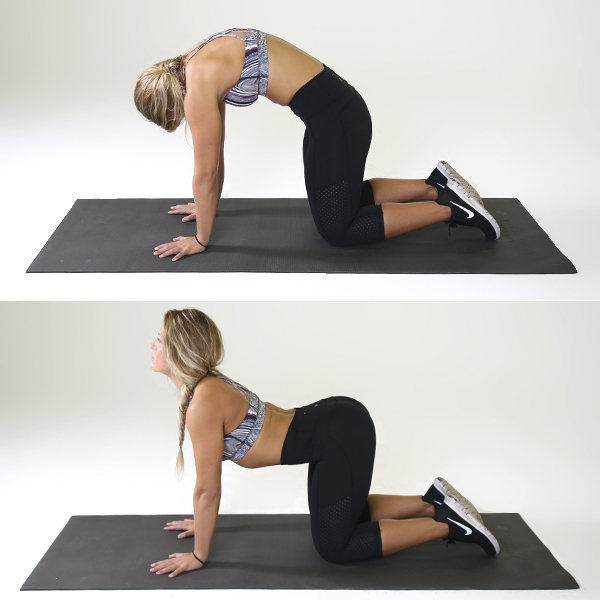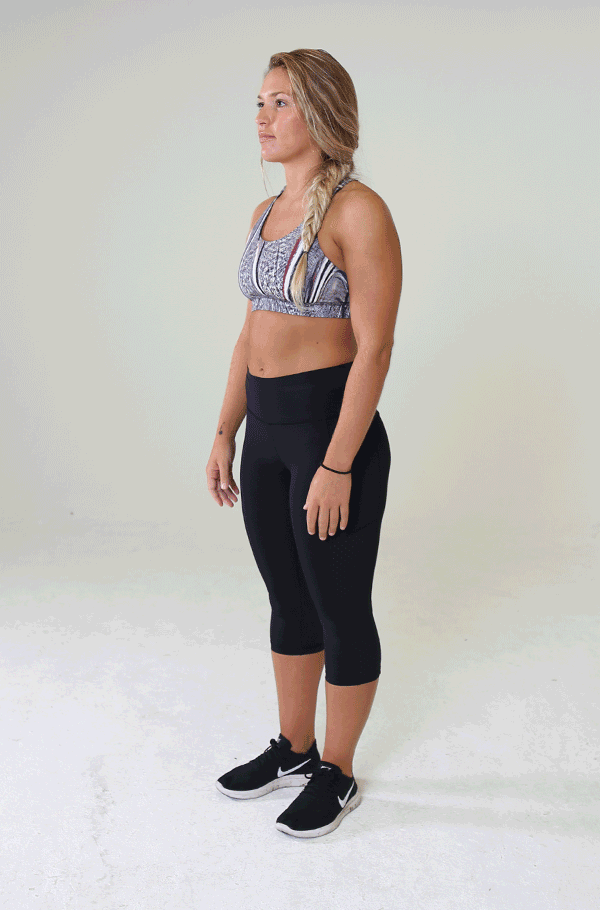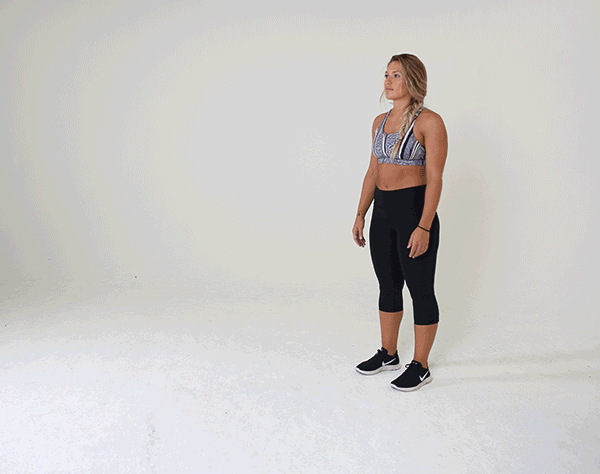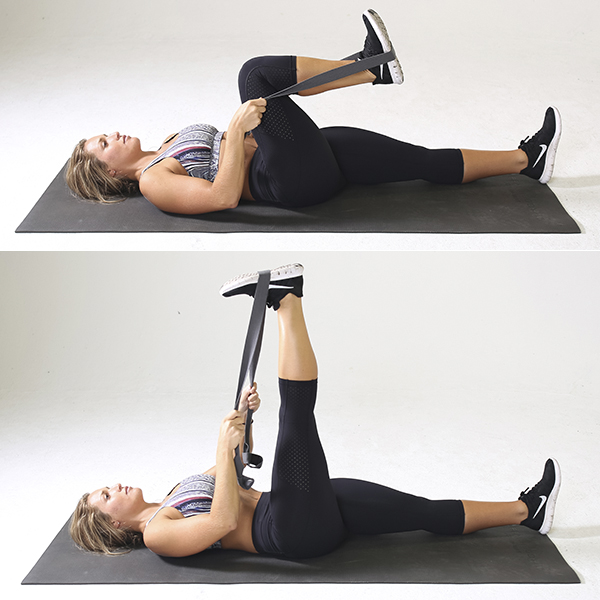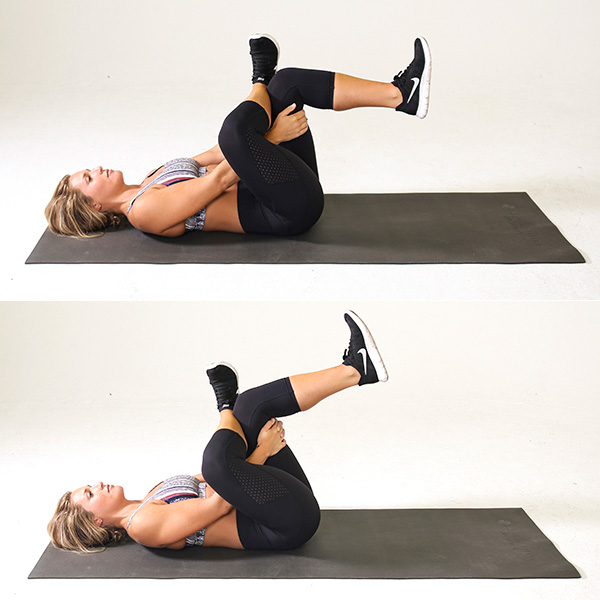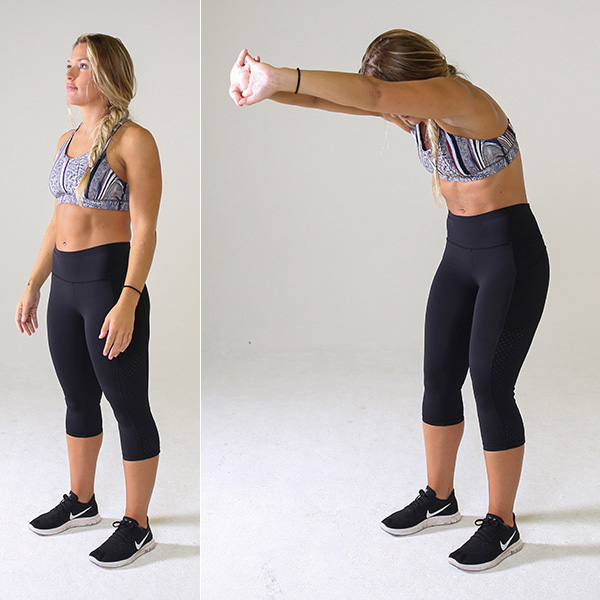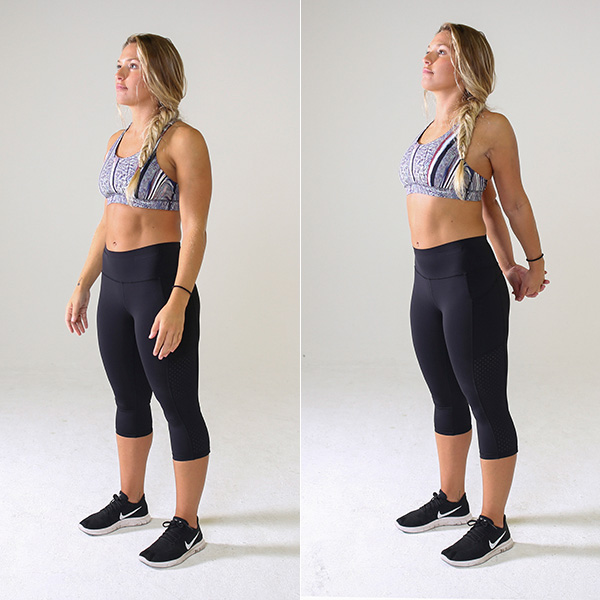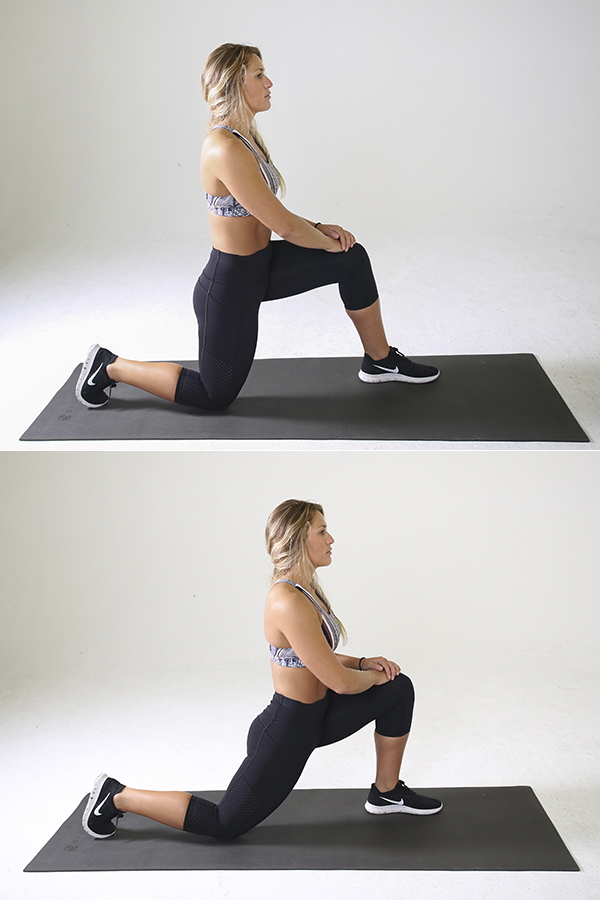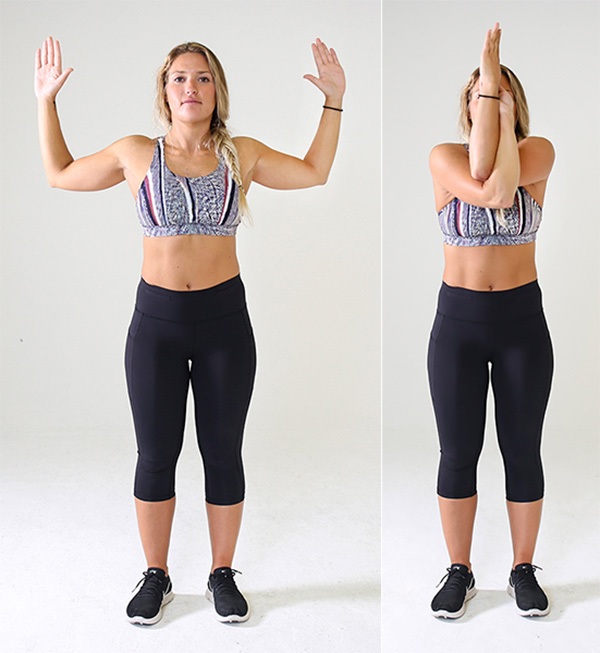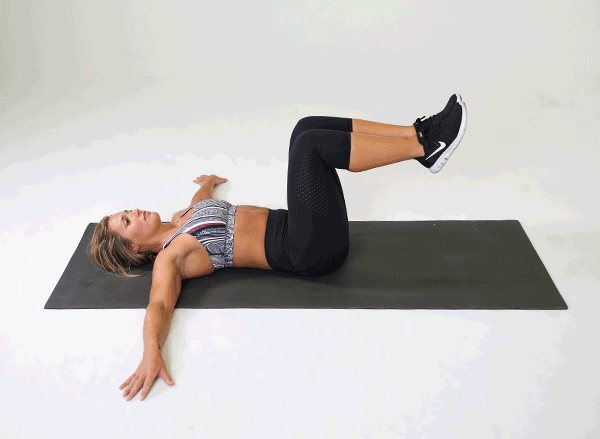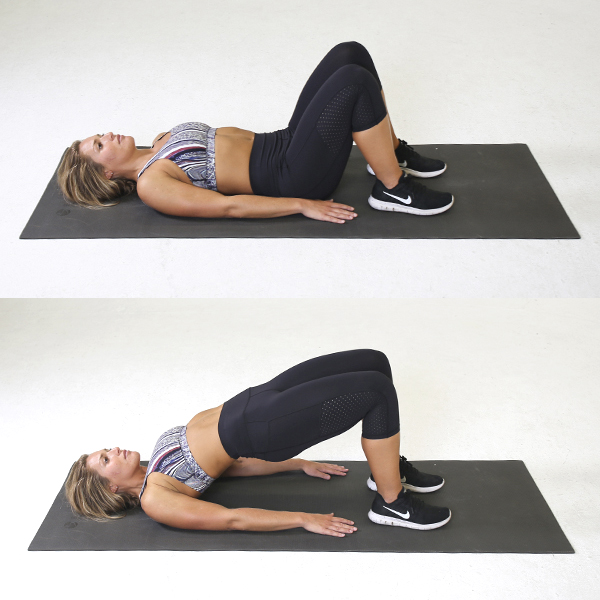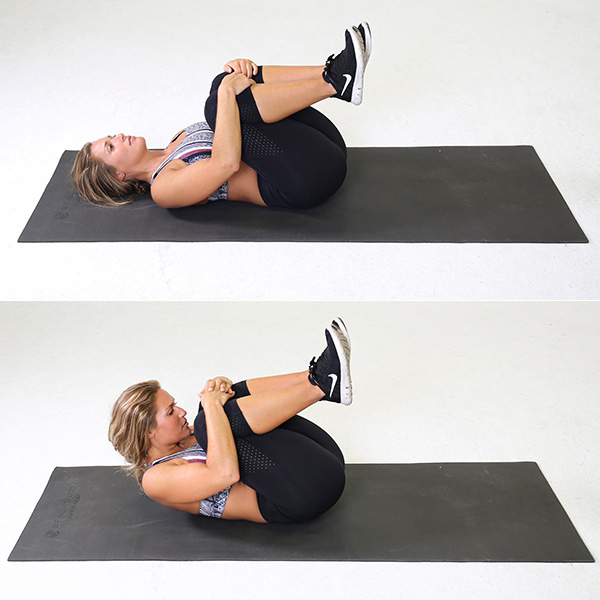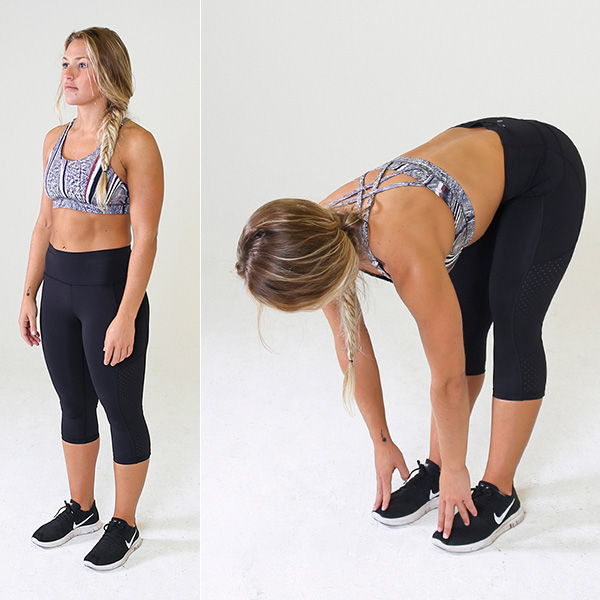Best Stretches for Warm-Up, Cooldown, and Flexibility
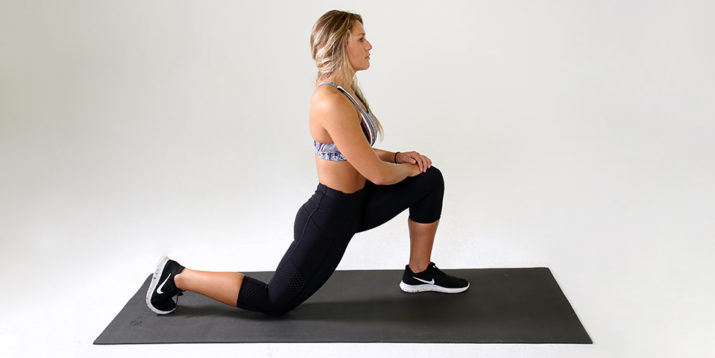
Contrary to what you might see on Instagram or in your local yoga studio, stretching exercises aren’t just for the human pretzels among us.
Stretching is essential for improving flexibility, which is an important component of overall fitness, along with mobility, strength, power, and endurance.
If they’re not already a part of your workout regimen, read on to learn which stretching exercises are best for warming up, cooling down, and improving overall fitness.
Why Is Flexibility Important?
Why does having pliable muscles matter? “Flexibility is important for injury prevention, power through range of motion, and soft tissue recovery,” says Tiffany Cruikshank, L.A.c., MAOM, RYT, founder of Yoga Medicine.
Those things matter if you’re trying to get stronger or faster.
Flexibility is related to muscle tension and length, and it’s a component of mobility, which is the degree to which you can move a joint through its full range of motion.
“Mobility is the key to functional strength — the stronger you are through a complete range of motion, the stronger, more powerful, and less prone to injury you are during workouts and everyday life,” says Trevor Thieme, C.S.C.S.
What Are the Most Common Types of Stretching?
There are many different kinds of stretching, but unless you’re an athlete, you can focus on two of them: static and dynamic.
“Both stimulate a neuromuscular pathway that relaxes a muscle — but the muscle you relax depends on the type of stretching you perform,” says Thieme. “And the type of stretching you perform should be dictated by when you perform it.”
Static stretching
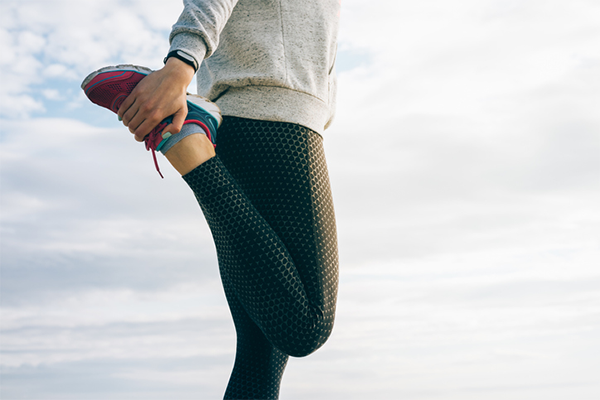
Static stretches are what you did in youth soccer or baseball when your coach instructed you to reach for your toes or interlace your fingers and reach overhead for 30 seconds.
“When you gradually stretch a muscle and then hold that stretch, you activate sensory receptors at the ends of the muscle called golgi tendon organs,” says Thieme, adding that when stimulated, they cause the muscle to relax.
“Static stretching affects static flexibility, which is why you shouldn’t do it before you work out — it won’t help boost performance during dynamic movements,” he explains.
Indeed, studies have found that static stretches can actually hinder your performance during a workout — without reducing the risk of injury.
For example, a 2013 study from The Journal of Strength and Conditioning Research found that pre-workout static stretches can impair power during weightlifting.
That’s no way to PR your deadlift.
Dynamic stretching
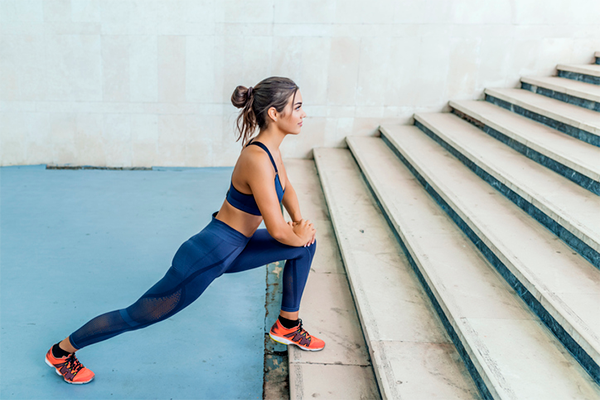
Dynamic stretching focuses on moving joints through their full, functional ranges of motion, and often simulates sport- or activity-specific movements.
A runner might do lunges and leg swings while a yogi might do sun salutations, for example.
If you’ve ever done a 22 Minute Hard Corps workout, you’re familiar with arm circles and trunk rotations, which will help boost performance in exercises ranging from the gorilla crawl to scissor slicer.
“Dynamic stretching affects dynamic flexibility — it primes your muscles for action — which is why you want to perform it before a workout,” says Thieme.
On the neuromuscular level, dynamic stretching stimulates sensory receptors called muscle spindles, which are located in the belly (i.e., center) of the muscle, explains Thieme.
“When stimulated, two things happen: The stretched muscle is signaled to contract, and the opposing muscle is signaled to relax,” he adds.
So if you’re warming up with bodyweight squats, you’ll cause a relaxation response in your hamstrings by initiating a stretch in your quads.
Research supports the efficacy of dynamic stretching: A 2008 study of nearly 1,900 female soccer players found that a tailored warm-up program of dynamic movements and stretches reduced not only the overall risk of injury, but also the specific risks of severe and overuse injuries.
Much of that has do to with an increase in dynamic flexibility.
“But there is also an increase in circulation and oxygenation, which enables the muscles to function more efficiently,” says Kelly King, DPT, the national dean of hospital programs at Carrington College.
People often confuse dynamic stretching with ballistic stretching, which involves bouncing instead fluid, controlled movements.
“Avoid ballistic stretches, as they can have the opposite effect of dynamic and static stretches, increasing your risk of injury rather than reducing it,” says Thieme.
Related: Static vs. Dynamic Stretching: Which Should You Do?
The Best Pre-Workout Stretching Exercises
These dynamic stretches prime joints and muscles for action. We’ve selected a couple of yoga-inspired movements to specifically target your spine and hips, and a handful of functional movements to prepare your entire body for any number of activities.
Repeat each move for one minute.
Cat-cow
This mini-flow between two poses will stretch your back, core, and hips, as well as your neck and chest.
- Start on all fours with your back flat, your hands under your shoulders, and your knees below your hips.
- On the exhale, round your back toward the ceiling, tucking your tailbone and bringing your chin to your chest.
- On the inhale, arch your back downward, dropping your belly and lifting your chest, chin, and tailbone.
- Continue alternating between the two poses, flowing with the pace of your breath.
Shoulder roll
The shoulders carry a lot of tension, and this simple movement can help release it, increasing your range of motion as a result.
- Stand with your feet hip-width apart, your shoulders relaxed, and your arms at your sides.
- Slowly roll your shoulders in a circle (forward, up, back, and down).
- After 30 seconds, reverse direction.
Walking lunge
The walking lunge challenges your stability, requiring you to engage your core as well as your glutes and legs.
It will also help stretch your hip flexors, warming them up for cardio or compound strength-training moves like the lunge and squat.
- Stand tall with your feet hip-width apart and your arms at your sides.
- Keeping your chest lifted, shoulders back, core braced, and back flat, take a large step forward with your right foot, lowering your body until your right thigh is parallel to the floor and both knees are bent 90 degrees.
- Bring your left foot forward to return to a standing position.
- Lunge forward again, this time with your left foot. Continue alternating legs, performing equal reps on both.
Hip circle
This is one of King’s go-to warm-up moves, as is the next one. It will help loosen up the back, hips, and core.
- Stand with your feet hip-width apart, knees slightly bent, hands on hips.
- Move your hips in a clockwise circle (forward, right, back, left), making larger circles as your muscles warm up.
- Continue for 30 seconds, and then repeat in the opposite (counterclockwise) direction.
Lateral and forward leg swing
The combination of these two moves will help warm up not only your hip muscles and joints, but also your glutes and hamstrings.
Lateral leg swing

- Stand tall with your feet together and your arms extended out to your sides or gripping a stable surface for balance.
- Shift your weight to your left leg and raise your right leg out to your right side.
- Keeping your chest lifted, core braced, and back flat, swing your right leg back and forth in front of your left.
- Continue for 30 seconds, switch legs, and repeat.
Forward leg swing
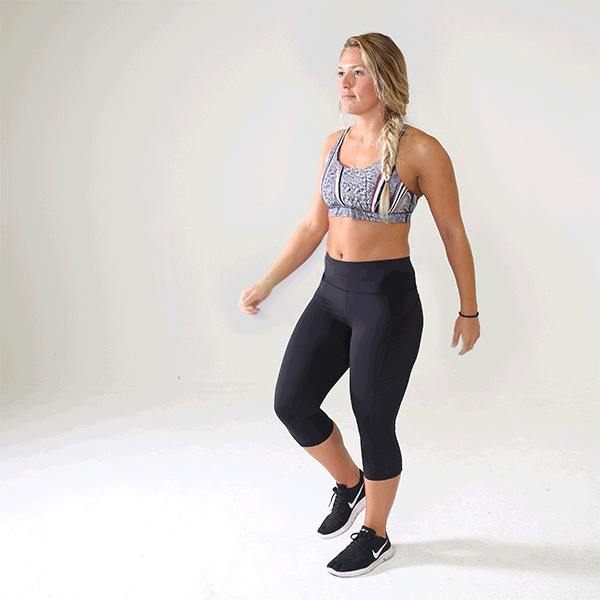
- Stand tall with your feet together and your arms at your sides or gripping a stable surface for balance.
- Shift your weight onto your left leg, and then swing your right leg and left arm in front of you.
- Switch directions, swinging your right leg and left arm behind you, and right arm in front of you.
- Repeat for 30 seconds, switch legs, and repeat.
The Best Post-Workout Stretching Exercises
These more conventional static stretching exercises, performed after a workout, can aid recovery and improve range of motion.
Hold each of these stretches for at least 30 seconds, and up to three minutes.
Reclined hamstring stretch
“Almost everyone can benefit [from this one],” says Cruikshank. Lying on the floor allows you to stretch one hamstring at a time, and using a yoga strap (or a towel) allows you to control the intensity of the stretch.
- Lie flat on the floor, and bring your right knee to your chest.
- Loop a strap or towel around the arch of your right foot, and hold it in both hands as you straighten your right leg as much as possible toward the ceiling (but don’t lock it out).
- Hold for 30 seconds, and then slowly bring your right knee back to your chest before straightening your right leg on the floor and repeating the stretch with your left leg.
Reclined figure 4 stretch
Also called “reclined pigeon,” this stretch targets tight hips and the inner thighs.
It also stretches the glutes and the piriformis, a muscle that runs from your sacrum to the outside of your upper thigh bone.
- Lie on your back with your knees bent and your feet flat on the floor. This is the starting position.
- Place your right ankle on top of your left thigh, and then interlace your fingers behind your left thigh.
- Pull your left thigh toward your chest as far as you can while pressing your right elbow against your right inner thigh to open your groin.
- Hold for 30 seconds, and then return to the starting position. Repeat on your other side.
Standing quad stretch
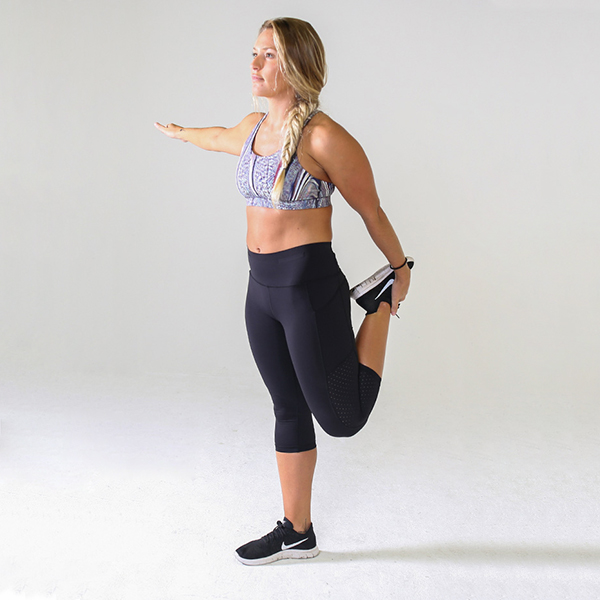
Tight quads (often the result of prolonged sitting) can contribute to lower back pain by tugging on your pelvis.
This flexibility exercise can help prevent that by stretching the front of your legs and hip flexors.
- Stand with your feet hip-width apart, using a chair or wall for balance if necessary.
- Keeping your chest lifted and core braced, bend your right knee and lift your foot behind you, grabbing the top of it with your hand.
- Actively press against your hand to feel the stretch in your thigh and hip flexor.
- Release your leg, and repeat on your other side.
Anterior and posterior shoulder stretch
This stretch can help undo some of the tension built up from spending too much time hunched over keyboards, steering wheels, and smartphones. It targets both the front and back of the shoulders, as well as the upper back and chest.
- Stand with your feet hip-width apart, keeping a small bend in your knees to avoid locking them.
- Interlace your fingers in front of you and press your palms away from your body.
- Keep your core engaged as you tuck your chin toward your chest and round your upper back to create a “C” shape.
- Hold for 30 seconds, and then release the stretch and interlace your fingers behind you with your palms facing each other.
- Keep your core braced as you press your chest forward and arch your upper back. Roll your shoulders down and back, and expand your chest. Hold for another 30 seconds.
Don’t feel like standing? This stretch can also be performed in a sitting position.
Kneeling hip flexor stretch
Tight hips are common if you sit all day — even if you work out regularly. This flexibility exercise can help open them, relieving tension in the lower back.
In addition to being a useful post-exercise stretch, it’s also one you can (and should) do every day.
- Assume a half-kneeling position with your right foot flat on the floor and your right knee positioned directly above your ankle. Place your hands on your right thigh. Your left knee and top of your left foot should be on the floor.
- Keeping your back flat, chest lifted, core engaged, and hips square, push your hips forward while pressing down with your left foot.
- Hold for 30 seconds, switch sides, and repeat.
The Best Everyday Stretching Exercises
If you only have time for a few stretching exercises a day, make ’em these. They’ll help you improve your flexibility and combat the tightness created by modern life, which often has us seated. Hold each stretch for at least 30 seconds, and up to three minutes.
Cactus & eagle arms
Together, these yoga poses encourage shoulder stability and open the chest, upper back, and neck.
- Sitting on a chair or standing with your feet hip-width apart, extend both arms out to your sides, forming a “T.” Bend your elbows 90 degrees so that your palms face forward (a position called “cactus arms”).
- Squeeze your shoulder blades together, and draw your arms back slightly behind you until you feel a stretch in your chest.
- Transition to eagle arms: Keeping your elbows bent and upper arms horizontal, cross your arms in front of you, right arm under left, and intertwine them, so that you can press your palms together.
- Tuck your chin and round your shoulders until you feel a stretch between your shoulder blades.
- Hold for at least 30 seconds, and then lift your chin, unwind your arms, and return to cactus arms before lowering them and finishing the pose.
- Continue alternating between cactus and eagle arms, switching your top arm during eagle arms each time.
Spinal twist
This stretching exercise — which releases tension in the lower back and hips, as well as in the chest and upper back — is one that Cruikshank loves, but thinks is often forgotten.
“The spine takes a lot of load, and both this move and the next one are great full-body stretches,” she says.
- Lie on your back with your knees bent, your feet flat on the floor, and your arms extended out to your sides, forming a “T.”
- Cross your right leg over your left, and slowly drop both knees to your left as you turn your head to your right.
- Bring your legs back to center, and repeat to your right, crossing your left leg over your right leg and looking left.
- Continue alternating sides, performing an equal number of stretches on each.
Bridge
In addition to strengthening your glutes and hamstrings, the bridge can help open up your chest.
- Lie on your back with your knees bent, your feet flat on the floor, and your arms by your sides, palms down.
- Press into your heels and lift your hips until they’re in line with your knees, interlacing your fingers behind your back and rolling your shoulders underneath you.
- To reverse the stretch, undo the clasp of your hands, and slowly lower yourself to the floor.
Lower back stretch
This simple stretch helps release tension in the lower back and is a counter stretch to the bridge. It’s especially beneficial when trying to wind down before bed (you can even do it in bed).
- Lie on your back and hug your knees to your chest, wrapping your arms around your legs. For more of a stretch, bring your forehead up toward your knees.
- If you want, you can also rock gently side to side.
Standing forward stretch
This stretch will release tension in your hamstrings, spine, neck, and back.
- Stand tall with your feet hip-width apart, arms at your sides.
- Keeping your knees slightly bent and your core braced, hinge forward at your hips and reach for your toes (don’t worry if you can’t touch them — just lower your torso as far as you can).
- Hold for the prescribed amount of time.
How Often Should You Stretch?
You need to warm up before every workout, but when it comes to improving overall flexibility, how often should you stretch beyond that?
Matt Eshleman, E-RYT 500, and owner of You Do Yoga in Cincinnati, likens stretching to brushing your teeth.
“It’s better to do it moderately and often, rather than intensely and infrequently,” he says.
King agrees that slow and steady wins the stretching race.
“Stretching has a cumulative effect on muscles,” she says. “You need to do it over and over in order for long-term changes to be made. Being patient while working to improve the flexibility of muscles can be a challenge. It may take weeks or months to attain a new level of flexibility that can be maintained.”
So, do you need to stretch every day? In a word, yes.
“It’s particularly important before and after a workout,” says Thieme.
But it’s also a good idea to schedule a longer session (like a yoga or functional movement class) once or twice a week, and shorter sessions to target problem areas (e.g., hamstrings, hips, shoulders, and lower back) whenever you can fit them in.
“Daily efforts to coax these [areas] through their basic movements will be well rewarded,” Eshleman says.
Flexibility takes practice, and if you have specific goals, you may need to put in more work, says Eshleman.
And if you’re new to stretching, that means you’ll need to do it more often.
“For someone who has trained for a long time, less time and effort will be needed to maintain an open, flexible body,” he says.
The Biggest Mistakes People Make When Stretching

Besides bouncing, the biggest mistake people make when stretching is forcing a muscle to extend beyond its current functional limit, says Cruikshank.
“It’s not so much about how deep you go as it is creating tissue pliability,” she says. King adds that “if the stretch is causing pain, decrease the intensity or stop immediately.”
Another mistake: “Going through the motions and not stretching with a purpose to target what’s important,” Cruikshank adds.
If you’re performing dynamic stretching, for instance, that means not tailoring your warm-up to your sport or activity.
No matter what type of stretching you do, King says it’s important to breathe, as that will help facilitate blood flow, and help you avoid tensing up when you should be relaxing.
The Bottom Line
Flexibility is an important part of fitness that shouldn’t be overlooked.
Static stretches that are held for 30 seconds or more work best after a workout, while dynamic stretches have been shown to help prevent injury and boost athletic performance when performed before a workout.
Similarly, daily stretching exercises — you only need a few minutes a day — can help increase your functional range of motion, which will benefit you both during your workouts and in everyday life.
And remember: Breathe, go slowly, and never, ever bounce!

